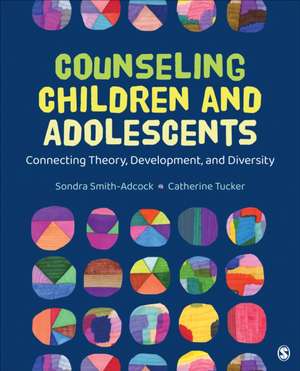Counseling Children and Adolescents: Counseling and Professional Identity
Editat de Sondra Smith-Adcock, Catherine Tuckeren Limba Engleză Paperback – 25 apr 2023
Din seria Counseling and Professional Identity
- 26%
 Preț: 693.25 lei
Preț: 693.25 lei -
 Preț: 404.22 lei
Preț: 404.22 lei - 26%
 Preț: 695.16 lei
Preț: 695.16 lei - 23%
 Preț: 928.20 lei
Preț: 928.20 lei - 26%
 Preț: 965.38 lei
Preț: 965.38 lei - 27%
 Preț: 996.54 lei
Preț: 996.54 lei - 5%
 Preț: 1284.42 lei
Preț: 1284.42 lei - 27%
 Preț: 991.19 lei
Preț: 991.19 lei - 27%
 Preț: 833.37 lei
Preț: 833.37 lei - 27%
 Preț: 985.59 lei
Preț: 985.59 lei - 27%
 Preț: 1088.85 lei
Preț: 1088.85 lei - 27%
 Preț: 785.45 lei
Preț: 785.45 lei - 5%
 Preț: 1026.91 lei
Preț: 1026.91 lei - 23%
 Preț: 622.84 lei
Preț: 622.84 lei - 27%
 Preț: 919.05 lei
Preț: 919.05 lei - 27%
 Preț: 834.76 lei
Preț: 834.76 lei - 8%
 Preț: 522.55 lei
Preț: 522.55 lei - 47%
 Preț: 370.28 lei
Preț: 370.28 lei - 8%
 Preț: 522.55 lei
Preț: 522.55 lei - 8%
 Preț: 522.55 lei
Preț: 522.55 lei - 15%
 Preț: 405.98 lei
Preț: 405.98 lei - 47%
 Preț: 368.38 lei
Preț: 368.38 lei
Preț: 697.75 lei
Preț vechi: 942.90 lei
-26% Nou
Puncte Express: 1047
Preț estimativ în valută:
133.52€ • 139.58$ • 112.83£
133.52€ • 139.58$ • 112.83£
Carte disponibilă
Livrare economică 14-28 februarie
Livrare express 30 ianuarie-05 februarie pentru 42.44 lei
Preluare comenzi: 021 569.72.76
Specificații
ISBN-13: 9781544385990
ISBN-10: 1544385994
Pagini: 456
Dimensiuni: 233 x 188 x 22 mm
Greutate: 0.88 kg
Ediția:2nd edition
Editura: SAGE Publications
Seria Counseling and Professional Identity
ISBN-10: 1544385994
Pagini: 456
Dimensiuni: 233 x 188 x 22 mm
Greutate: 0.88 kg
Ediția:2nd edition
Editura: SAGE Publications
Seria Counseling and Professional Identity
